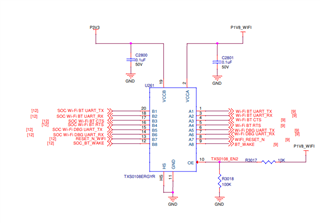Other Parts Discussed in Thread: TXU0304, TXU0104, TXU0204
Tool/software:
Hi TI Team,
Could you please review the implementation of the level translator and share your review comments?

Also could you please clarify the below queries?
- Could you please verify the above schematics and confirm whether this implementation works?
- Our application's required speed is 4Mbps, can we use this level translator for 4Mbps signals?
- please confirm whether the configuration of this level translator is push-pull or open drain.
Thanks
Sandra

